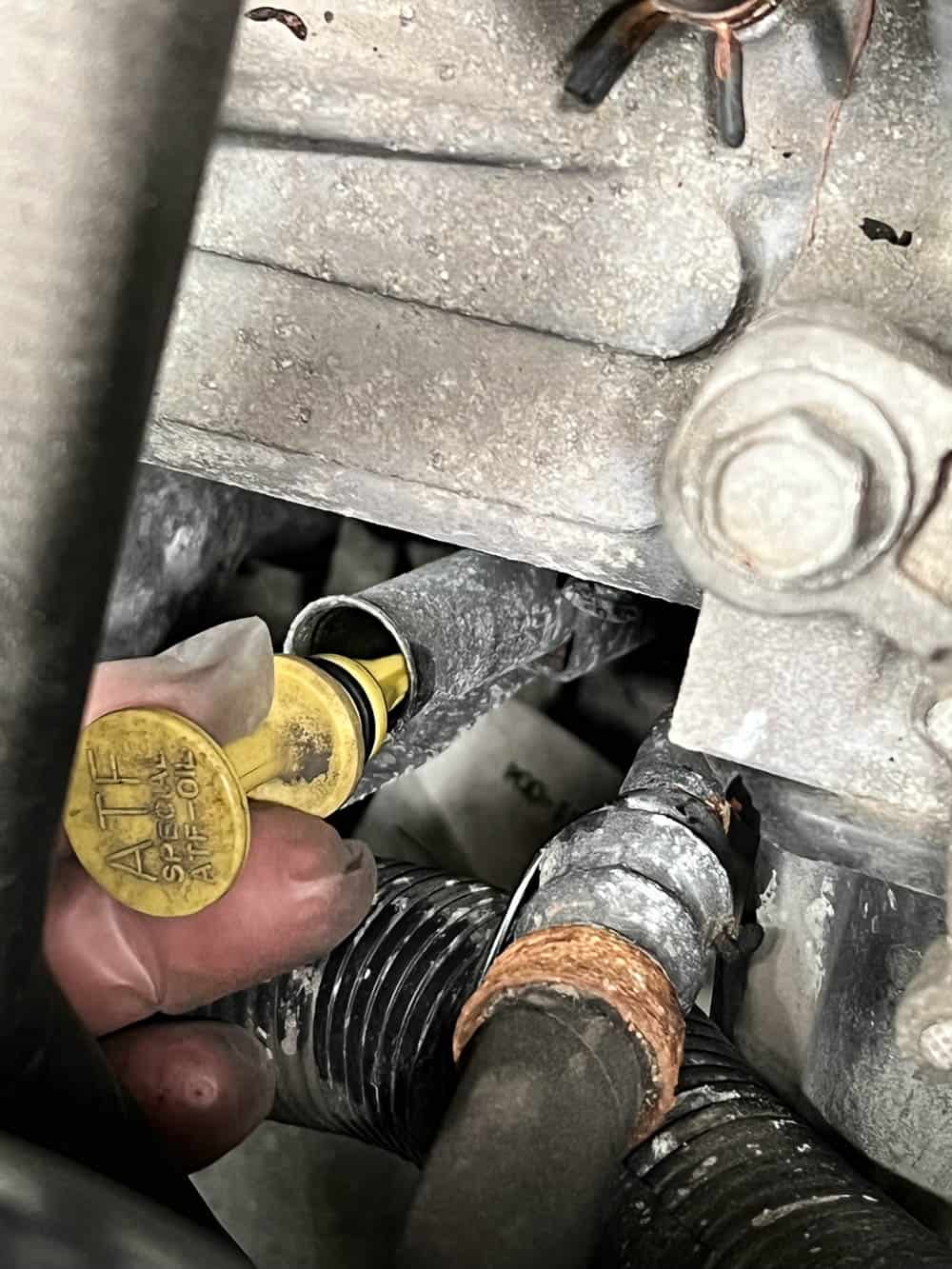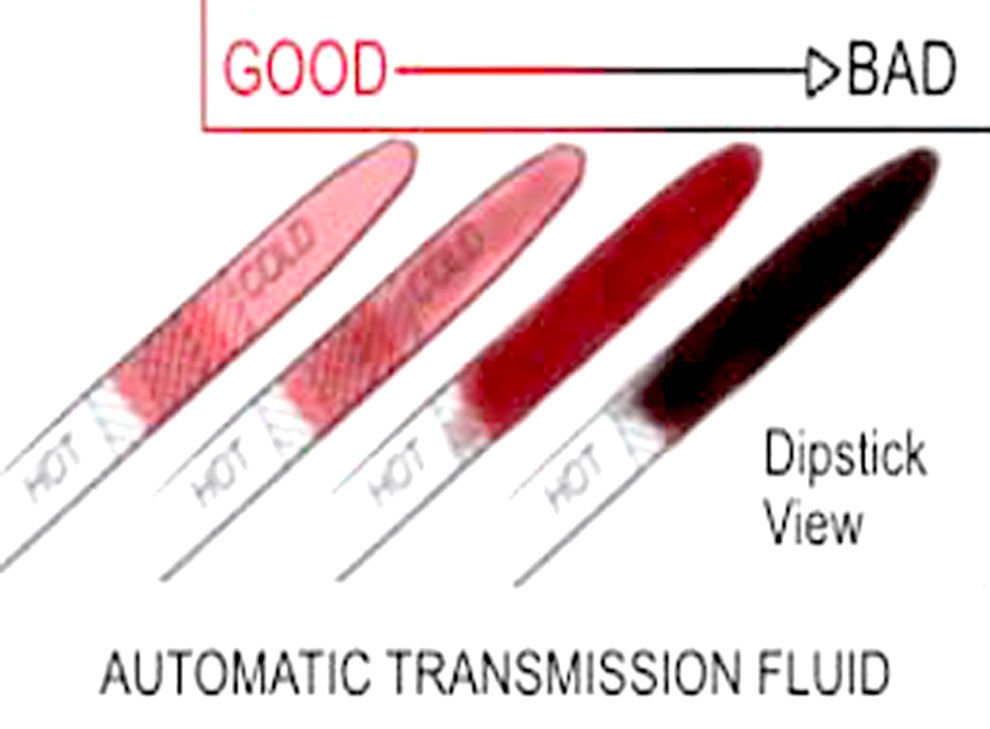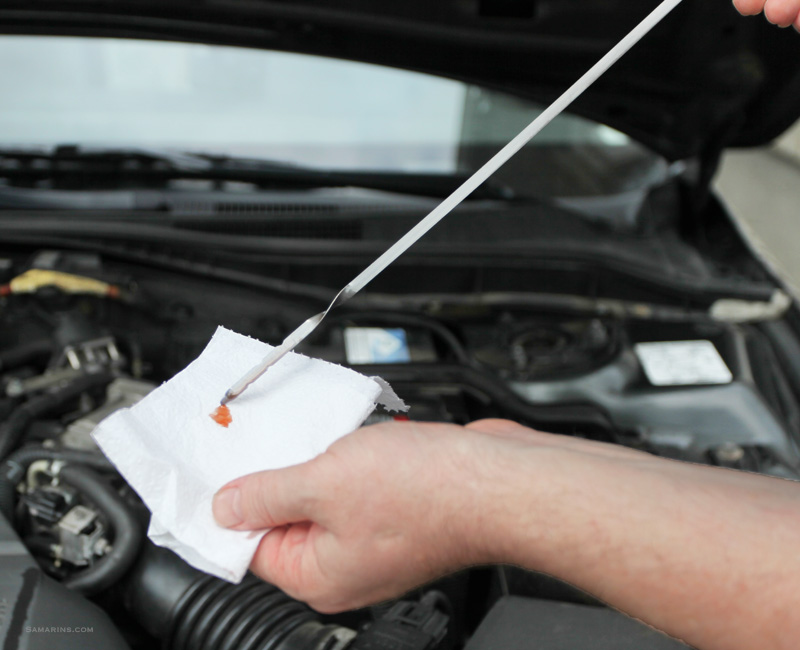Transmission fluid keeps your car’s transmission system lubricated and cool. Over time, fluid levels can drop, leading to potential problems. Checking the fluid regularly can prevent costly repairs and extend the life of your vehicle. This guide will show you simple steps to measure transmission fluid accurately.
Preparing To Check Transmission Fluid
Make sure the car is on a flat surface. Engage the parking brake. Turn off the engine and let it cool down. Wear gloves to protect your hands. Avoid touching hot parts of the engine. Keep children and pets away from the area. Have a fire extinguisher nearby, just in case.
You will need a clean rag or paper towel. Get a flashlight for better visibility. Have a funnel ready for adding fluid. A jack might be needed to lift the car. Check the car manual for specific instructions. Keep a drain pan nearby in case of spills. Make sure you have the correct transmission fluid for your car model.

Credit: www.theartofdoingstuff.com
Locating The Transmission Dipstick
Different engines have the dipstick in different spots. The dipstick is often near the engine block. In some cars, it is at the back of the engine. In others, it is at the front. Check if the car has a front-wheel or rear-wheel drive. This affects the dipstick location.
The owner’s manual is very helpful. It shows where the dipstick is. Look for the maintenance section. It has pictures and details. These make it easy to find the dipstick. Follow each step in the manual for best results.
Checking The Transmission Fluid Level
Check the transmission fluid level by first ensuring the car is on a flat surface. Then, locate the dipstick, pull it out, and wipe it clean. Insert it back, pull it out again, and read the fluid level.
Steps To Check Fluid
First, warm up the engine by driving for a few minutes. Park on a level surface and leave the engine running.
Find the transmission fluid dipstick, usually near the engine. Pull out the dipstick and wipe it clean with a cloth. Insert the dipstick back into its tube, then pull it out again. Look at the fluid level on the dipstick.
Interpreting Dipstick Readings
The dipstick has marks showing the fluid level. Ensure the fluid is between the “Full” and “Add” marks. If the level is low, add the correct type of transmission fluid. Pour slowly to avoid overfilling. Check the fluid color and smell.
Clean fluid is usually red and doesn’t smell burnt. If the fluid looks dirty or smells bad, it may need changing.

Credit: www.westplainsdailyquill.net
Maintaining Healthy Transmission Fluid
A regular check-up keeps your car running smoothly. Check the transmission fluid level every month. This helps catch problems early. Look for changes in color and smell. Fresh fluid is red and does not have a burnt smell. If it’s dark or smells burnt, change it soon.
Always use the fluid type recommended by your car’s maker. Never mix different types of fluid. Check the level with the engine warm and idling. Keep the car on a level surface. Wipe the dipstick with a clean cloth. This helps get an accurate reading. Top up the fluid if it’s low. Do not overfill.
Conclusion
Checking your transmission fluid is essential for car maintenance. Follow the steps regularly to ensure smooth driving. Proper fluid levels prevent potential damage and costly repairs. Always use the correct fluid type for your vehicle. Consult your car’s manual if unsure.
Keep a regular schedule for checking and changing fluid. This simple habit keeps your car running efficiently. Remember, a well-maintained car lasts longer and performs better. Stay proactive and keep your transmission in top shape.

Credit: www.autotransmatic.com
Preparing To Check Transmission Fluid
Make sure the car is on a flat surface. Engage the parking brake. Turn off the engine and let it cool down. Wear gloves to protect your hands. Avoid touching hot parts of the engine. Keep children and pets away from the area. Have a fire extinguisher nearby, just in case.
You will need a clean rag or paper towel. Get a flashlight for better visibility. Have a funnel ready for adding fluid. A jack might be needed to lift the car. Check the car manual for specific instructions. Keep a drain pan nearby in case of spills. Make sure you have the correct transmission fluid for your car model.

Credit: www.theartofdoingstuff.com
Locating The Transmission Dipstick
Different engines have the dipstick in different spots. The dipstick is often near the engine block. In some cars, it is at the back of the engine. In others, it is at the front. Check if the car has a front-wheel or rear-wheel drive. This affects the dipstick location.
The owner’s manual is very helpful. It shows where the dipstick is. Look for the maintenance section. It has pictures and details. These make it easy to find the dipstick. Follow each step in the manual for best results.
Checking The Transmission Fluid Level
Check the transmission fluid level by first ensuring the car is on a flat surface. Then, locate the dipstick, pull it out, and wipe it clean. Insert it back, pull it out again, and read the fluid level.
Steps To Check Fluid
First, warm up the engine by driving for a few minutes. Park on a level surface and leave the engine running.
Find the transmission fluid dipstick, usually near the engine. Pull out the dipstick and wipe it clean with a cloth. Insert the dipstick back into its tube, then pull it out again. Look at the fluid level on the dipstick.
Interpreting Dipstick Readings
The dipstick has marks showing the fluid level. Ensure the fluid is between the “Full” and “Add” marks. If the level is low, add the correct type of transmission fluid. Pour slowly to avoid overfilling. Check the fluid color and smell.
Clean fluid is usually red and doesn’t smell burnt. If the fluid looks dirty or smells bad, it may need changing.

Credit: www.westplainsdailyquill.net
Maintaining Healthy Transmission Fluid
A regular check-up keeps your car running smoothly. Check the transmission fluid level every month. This helps catch problems early. Look for changes in color and smell. Fresh fluid is red and does not have a burnt smell. If it’s dark or smells burnt, change it soon.
Always use the fluid type recommended by your car’s maker. Never mix different types of fluid. Check the level with the engine warm and idling. Keep the car on a level surface. Wipe the dipstick with a clean cloth. This helps get an accurate reading. Top up the fluid if it’s low. Do not overfill.
Conclusion
Checking your transmission fluid is essential for car maintenance. Follow the steps regularly to ensure smooth driving. Proper fluid levels prevent potential damage and costly repairs. Always use the correct fluid type for your vehicle. Consult your car’s manual if unsure.
Keep a regular schedule for checking and changing fluid. This simple habit keeps your car running efficiently. Remember, a well-maintained car lasts longer and performs better. Stay proactive and keep your transmission in top shape.
